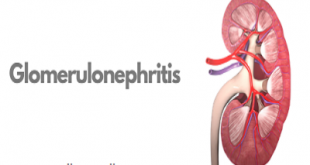What is Multicystic Dysplastic Kidney? Multicystic dysplastic kidney (MCDK) is a condition in which one or both of a baby’s kidneys do not develop normally while the baby is growing in the womb. Fluid-filled sacs, called cysts, replace normal kidney tissue and prevent the affected kidney from working. When only …
Read More »End-Stage Renal Disease – Symptoms, Causes and Treatment
Overview End-stage renal disease, also called end-stage kidney disease or kidney failure, occurs when chronic kidney disease — the gradual loss of kidney function — reaches an advanced state. In end-stage renal disease, your kidneys no longer work as they should to meet your body’s needs. Your kidneys filter wastes …
Read More »Glomerulonephritis – Risk Factors, Complications, and Treatment
Glomerulonephritis – Overview Glomerulonephritis refers to acute and chronic kidney diseases caused by injury to the glomerulus, a part of the kidney responsible for filtering blood. If the kidney is injured, it is unable to filter blood properly. Over time, the kidney’s efficiency decreases, affecting the removal of extra fluid …
Read More »Nephrocalcinosis – Summary, Pathophysiology, and Prevention.
Nephrocalcinosis – Summary Nephrocalcinosis is a disorder that occurs when too much calcium is deposited in the kidneys. It commonly occurs in premature infants. Individuals may not have symptoms or may have symptoms related to the condition causing Nephrocalcinosis. If kidney stones are present, symptoms may include blood in the …
Read More »Hydronephrosis – Pathophysiology, Diagnosis, and Treatments.
What is Hydronephrosis? Hydronephrosis is the swelling of a kidney due to a build-up of urine. It happens when urine cannot drain out from the kidney to the bladder from a blockage or obstruction. Hydronephrosis can occur in one or both kidneys. The main function of the urinary tract is …
Read More »Renal Artery Stenosis (RAS) – Pathophysiology, Risk factors and Causes
Definition Renal artery stenosis (RAS, sometimes also called renal artery disease or kidney stenosis) occurs when the two main vessels that deliver blood to the kidneys become stiff or narrowed due to vascular disease. RAS is a type of atherosclerosis or hardening of the arteries, which occurs when fatty cholesterol …
Read More »Hemolytic Uremic Syndrome – Causes, Symptoms, and Prevention.
What is hemolytic uremic syndrome? Hemolytic uremic syndrome, or HUS, is a kidney condition that happens when red blood cells are destroyed and block the kidneys’ filtering system. Red blood cells contain hemoglobin – an iron-rich protein that gives blood its red color and carries oxygen from the lungs to …
Read More »Horseshoe kidney- Diagnosis, Complications, and Treatment
Definition Horseshoe kidney occurs in about one in 500 children. It occurs during fetal development as the kidneys move into their normal position in the flank area (area around the side, just above the waist). With horseshoe kidney, however, as the kidneys of the fetus rise from the pelvic area, …
Read More » Diseases Treatments Dictionary This is complete solution to read all diseases treatments Which covers Prevention, Causes, Symptoms, Medical Terms, Drugs, Prescription, Natural Remedies with cures and Treatments. Most of the common diseases were listed in names, split with categories.
Diseases Treatments Dictionary This is complete solution to read all diseases treatments Which covers Prevention, Causes, Symptoms, Medical Terms, Drugs, Prescription, Natural Remedies with cures and Treatments. Most of the common diseases were listed in names, split with categories.








